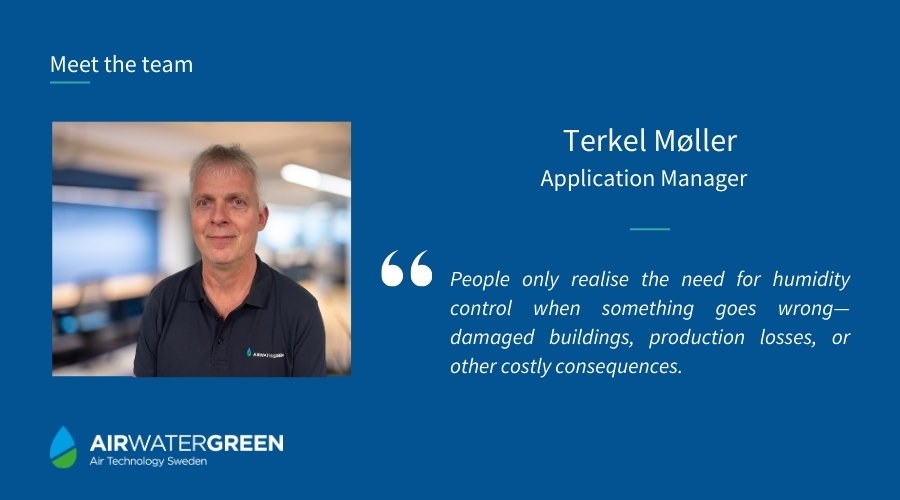What makes Terkel’s expertise so valuable? We sat down with him to discuss his journey, the challenges industries face with moisture control, and how NEXT technology is transforming the way businesses handle humidity.
A passion for problem-solving
Terkel’s journey into moisture control was not a straight path.
“I started as a mechanical engineer, working on different types of mechanical machinery. Then one day, a friend told me that a Danish company, COTES, was looking for an engineer. That’s when I transitioned from general engineering to dehumidification. It was a new challenge—one I’ve now been working with for over 15 years.”
Why moisture control is more important than you think
One of the biggest challenges in dehumidification is that problems are often invisible—until they become costly.
“People don’t always realise they have a moisture issue until it affects their buildings, equipment, or production. By the time they notice, the damage is often done. That’s why understanding humidity control is crucial for so many industries.”
How the industry is evolving
Over the years, Terkel has seen the industry shift, with efficiency and cost-effectiveness becoming key priorities.
“Customers today focus much more on operational costs, energy consumption, and ease of installation. Traditional dehumidification systems can be expensive and complex to install. Businesses are looking for smarter, more compact solutions that minimise costs without compromising performance.”
A fresh approach with NEXT technology
Terkel believes that Airwatergreen’s NEXT technology is a game-changer in industrial dehumidification.
“NEXT uses significantly less energy compared to traditional adsorption technology, reducing consumption by up to 70%. It’s also easier to install, requiring no ducting and lower power demands, making it an ideal solution for industries struggling with installation constraints.”
What industries struggle with most—and how Airwatergreen can help
Every sector has unique challenges when it comes to humidity control. According to Terkel, the most common issues include:
- Finding the right installation location – without excessive modifications.
- Managing sudden peaks in humidity – without disrupting operations.
- Ensuring power availability – to support additional energy demands.
- Justifying the investment – by demonstrating long-term savings and benefits.
“One of my main goals at Airwatergreen is to help businesses understand how much they can save—not just in energy costs, but in preventing damage and inefficiencies caused by moisture.”
Looking ahead: helping businesses make the switch
For Terkel, the most exciting part of his role at Airwatergreen is showing customers how NEXT can simplify dehumidification.
“I’m really looking forward to helping more businesses see the benefits of Airwatergreen’s solutions. The combination of lower energy use, easy installation, and smart technology makes it a powerful alternative to traditional methods. I can’t wait to see more industries making the switch.”
Get in touch with our team to learn more about how NEXT technology can help your business reduce costs, improve efficiency, and simplify humidity management.

